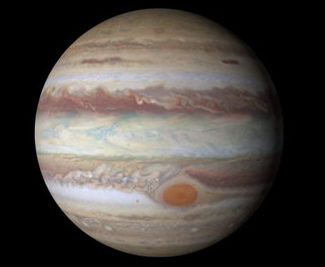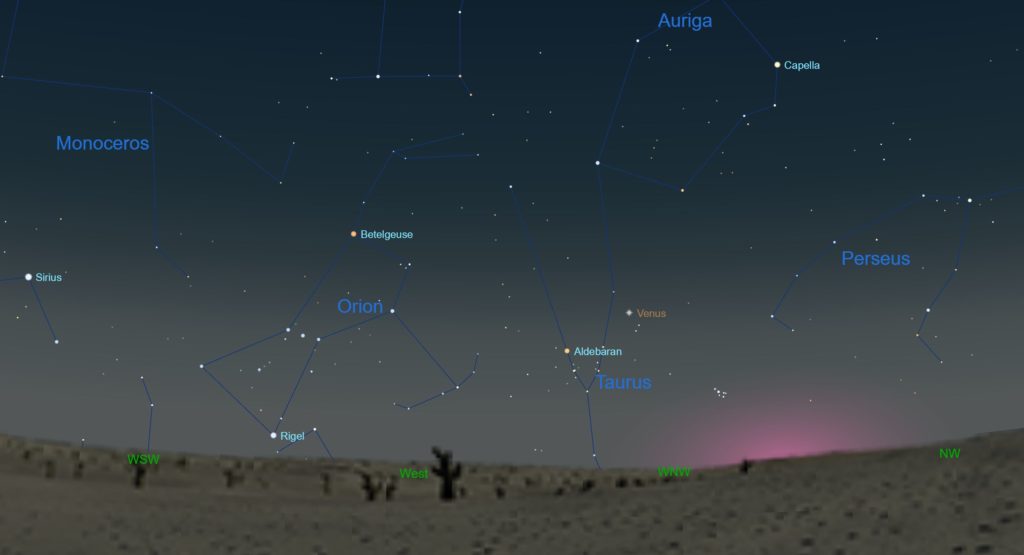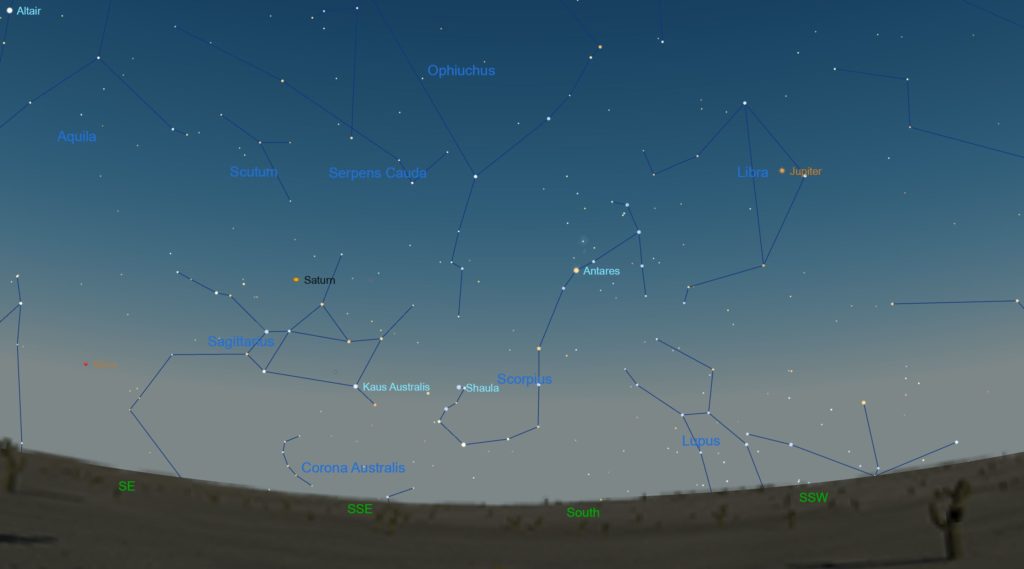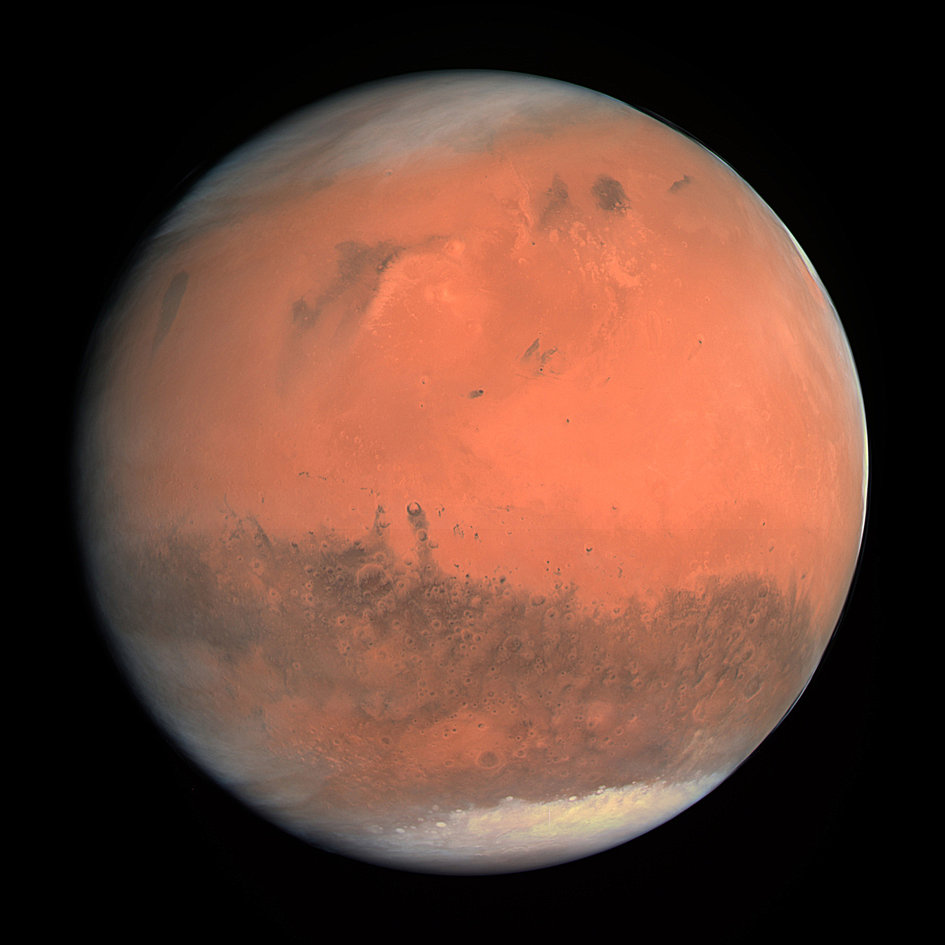
The long-anticipated string of planetary oppositions begins this month as Jupiter rises opposite the Sun on May 8, making its closest approach to Earth for the year. Saturn will follow on June 27, then Mars a month later. All three bright planets are strung along the southern ecliptic during May, while Venus dominates the western sky after sunset. Add in a fine meteor shower on May 6 and a few encounters between the Moon and some famous star clusters, and you’re all set for a month of good stargazing. Here’s what to see in the night sky this month…
2 May 2018. Look for Venus and the yellow-orange star Aldebaran about three finger-widths apart in the western sky after sunset. Venus shines at magnitude -3.9 this month, a relatively middling brightness for this planet, but it’s spectacular nonetheless. In a telescope the planet appears just 12” across and more than 80% illuminated.

4 May. Get out of bed early to spot the latest wanderings of Mars and Saturn in and around the constellation Sagittarius. Today, Saturn, the waning gibbous Moon, and the star at the tip of the ‘Teapot’ of Sagittarius are arranged in a triangle in the southeastern sky in the hours before dawn. Red-orange Mars, quickly brightening and grower larger in a telescope every day, lies just to the east.
6 May. The Eta Aquariid meteor shower peaks in the early-morning hours of May 6. This is one of the finest meteor showers for observers in the southern-hemisphere and southern latitudes of the northern hemisphere. The event occurs as the Earth passes through the stream of debris of Comet 1/P Halley (ie. Halley’s Comet). Look anywhere in the sky to see these fleeting meteors that trace their paths back to a point near the Circlet of Pisces, a little group of stars that emerges above the eastern horizon in the wee hours in early May. Some studies suggest the shower may get a little boost this year because of Jupiter’s gravitational influence on the comet’s debris trail.

6 May. Mars is just 3 degrees south of the waning Moon. Mars has a big month in May, growing in brightness from magnitude -0.4 to an impressive -1.2, and in size from 11” to 15”. On a night of steady seeing, with a good telescope at high magnification, surface features will be visible. The planet rises before 2 a.m. local time on May 1, and near midnight by month’s end. When the planet reaches opposition at the end of July, it will make its closest approach to Earth in 15 years. Get your telescope ready!
8 May. Last Quarter Moon, 2:09 UT
9 May. Jupiter reaches opposition at 01:00 UT, rising in the eastern sky as the Sun sets in the west. The planet is now as close and bright as it will get all year. Jupiter’s brightness peaks at magnitude -2.5 this month, far brighter than any star, and it reaches an apparent diameter of 44″. Grab your binoculars and watch the moons dance around the planet from night to night. Or grab your telescope and power up to see the perpetual storms and fine detail nestled in the cloud bands of this great planet. There’s always something to see on or around Jupiter, and this month and the next few months is the best time to see it all year. I’ll have a longer article about how to observe Jupiter in the coming days…
15 May. New Moon, 11:48 UT

17 May. Look for a newly-minted crescent Moon low in the western sky near bright Venus.
19 May. The waxing crescent Moon lies within the same binocular field of view of the star cluster M44, the Beehive, in the western sky after sunset.
20 May. The Moon grazes yet another star cluster, this time M35 in the constellation Gemini. Grab a pair of binoculars and enjoy the view.
21 May. Moving eastward along the ecliptic, the nearly first-quarter Moon comes within one finger-width of the bright white star Regulus in the constellation Leo.
22 May. First Quarter Moon, 3:49 UT
22 May. Spring finally begins… in the southern hemisphere of Mars! That means the southern Martian polar cap is tilted towards our point of view and begins to shrink slowly in the coming months.

26 May. The gibbous Moon forms a triangle with the bright star Spica and much brighter planet Jupiter.
29 May. Full Moon, 14:19 UT
31 May. Just past full, the Moon rises with the planet Saturn in the eastern sky well after midnight. With a month to go until opposition, Saturn rises around midnight on May 1 and 10 p.m. by the end of the month. It reaches its highest point in the sky a few hours before dawn in May. The planet lies in Sagittarius, nearly as far south as it can get, so this year’s apparition favors southern stargazers.